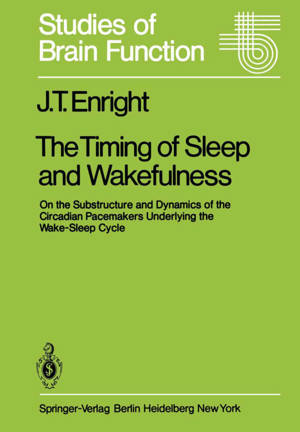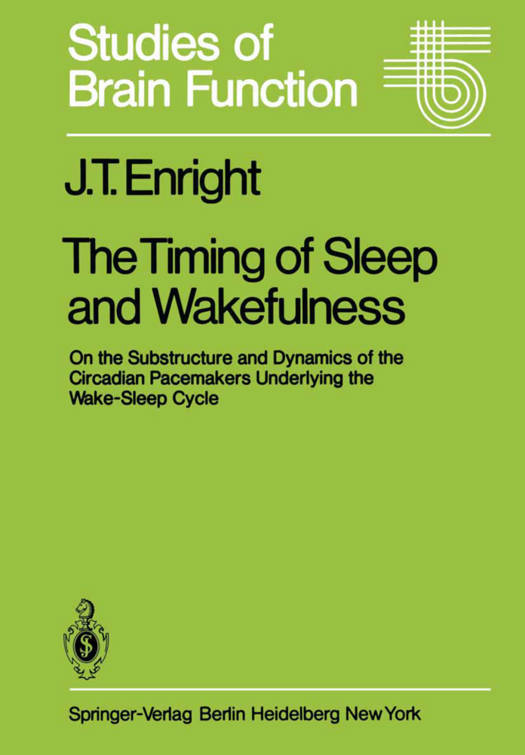
- Afhalen na 1 uur in een winkel met voorraad
- Gratis thuislevering in België vanaf € 30
- Ruim aanbod met 7 miljoen producten
- Afhalen na 1 uur in een winkel met voorraad
- Gratis thuislevering in België vanaf € 30
- Ruim aanbod met 7 miljoen producten
Zoeken
The Timing of Sleep and Wakefulness
On the Substructure and Dynamics of the Circadian Pacemakers Underlying the Wake-Sleep Cycle
J T Enright
€ 159,45
+ 318 punten
Omschrijving
The brain functions like a computer composed of subsystems which in- teract in a hierarchical manner. But it is not a single hierarchy, but a com- plex system of hierarchies each of which has its very own and unique fea- ture. One of these concerns the cyclic or rhythmic control of neuronal ac- tivities which, among others, give rise to alternating states of wakefulness and sleep. The phenomenon of sleep still remains a mystery. The present monograph does not give us any new insights into its meaning and significance. Yet sleep research may not be the same after the appearance of this book be- cause it gives us a comprehensive mathematical theory which opens our eyes to new insights into the mechanism of the rhythm generation that under- lies the "wake-sleep" cycle. No one who has worked his way through this book can again look at ex- perimental data without recognizing features which the "models" developed in its various chapters so strikingly reveal.
Specificaties
Betrokkenen
- Auteur(s):
- Uitgeverij:
Inhoud
- Aantal bladzijden:
- 263
- Taal:
- Engels
- Reeks:
- Reeksnummer:
- nr. 3
Eigenschappen
- Productcode (EAN):
- 9783540096672
- Verschijningsdatum:
- 1/02/1980
- Uitvoering:
- Paperback
- Formaat:
- Trade paperback (VS)
- Afmetingen:
- 170 mm x 244 mm
- Gewicht:
- 462 g

Alleen bij Standaard Boekhandel
+ 318 punten op je klantenkaart van Standaard Boekhandel
Beoordelingen
We publiceren alleen reviews die voldoen aan de voorwaarden voor reviews. Bekijk onze voorwaarden voor reviews.








